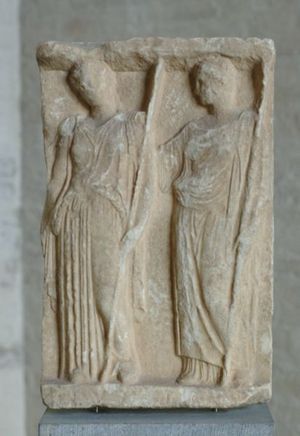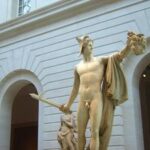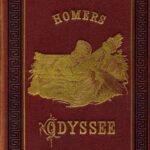In ancient Greek mythology, the cycle of life and death, the self-perpetuating pattern of birth, demise, and resurrection, as well as the hope for a serene afterlife are encapsulated in the myth of the goddess Persephone.
Persephone was the daughter of Zeus and Demeter, wife of Hades, and mother of the Furies. She was a figure of light and shadow, of mercy and wrath, of devotion and forgetfulness. The mythological presence of Persephone is as elusive as the shadows of the dead she reigned over. This is reflected in the mystery surrounding her name. To the Greeks she was Persephone, Kore (= daughter, maiden), and the Iron Queen. To the Romans she was Proserpina (Proserpine), goddess of nature’s rebirth. Various interpretations have been proposed as to the etymology of the name “Persephone”: the Destroyer of Death, the Sheaf-Beater, and Goddess of Springtime (from the Latin verb proserpere = to emerge, to spring forth). As we can see, the contradictory, as well as complementary, concepts of life and death permeate the very name of this goddess.
Central to the myth of Persephone is the story of her abduction. Hades, the god of the underworld, fell in love with the young Persephone and decided to kidnap her. One day, as Persephone was gathering flowers in a meadow, Hades emerged in his chariot through a chasm in the earth, seized the young girl and carried her off to the land of the dead. In vain did her mother, Demeter, search for her. No mortal or immortal would tell her what had happened to her beloved daughter. Only the all-seeing Sun revealed to the desperate mother the whereabouts of Persephone. Then Demeter, the Patron of Agriculture, through her anger and grief, caused all vegetation to wither and die and the earth to go barren. With the intervention of Zeus, a compromise was made possible. Persephone was immediately returned to her mother, but she would only spend part of the year on the world above. (Some myths state eight, others six months a year.) The rest of the time, Persephone would reign over the souls of the dead with her husband, Hades. But before Hades let Persephone go, he gave her pomegranate seeds to eat, so that she would return to him.
The parallel to the cycle of life is clear: When Persephone emerges from the underworld, the earth blossoms and the vegetation flourishes. When Persephone descends to the underworld, bitter cold and barrenness fall upon the earth. And so on and so forth, in an eternal cycle of alternating stages of life, death, and rebirth.
The cult of Persephone and Demeter was celebrated during the Eleusinian Mysteries, held every October in the town of Eleusis, about 20 miles NW of Athens. The rites took place in the Hall of Initiation, in the flickering torchlight. Only fragments of information have reached us through the centuries: No one really knows what happened during the initiation ceremonies. There are references to a sacred chest (kiste) and a lidded basket (kalathos), but no information as to their contents and significance. Scholars seem to agree, however, that through a combination of sacred chanting, symbolic objects, dancing, dramatic performance, and libations, the initiates (mystai) achieved a spiritual connection with Demeter’s grief at the loss of her daughter (acceptance of death) and her elation at Persephone’s ascent from the underworld (anticipation of resurrection and eternal life).
The Eleusinian Mysteries were abolished in the late 4th c. AD, as part of the suppression of Hellenic cults by Christian emperors.




